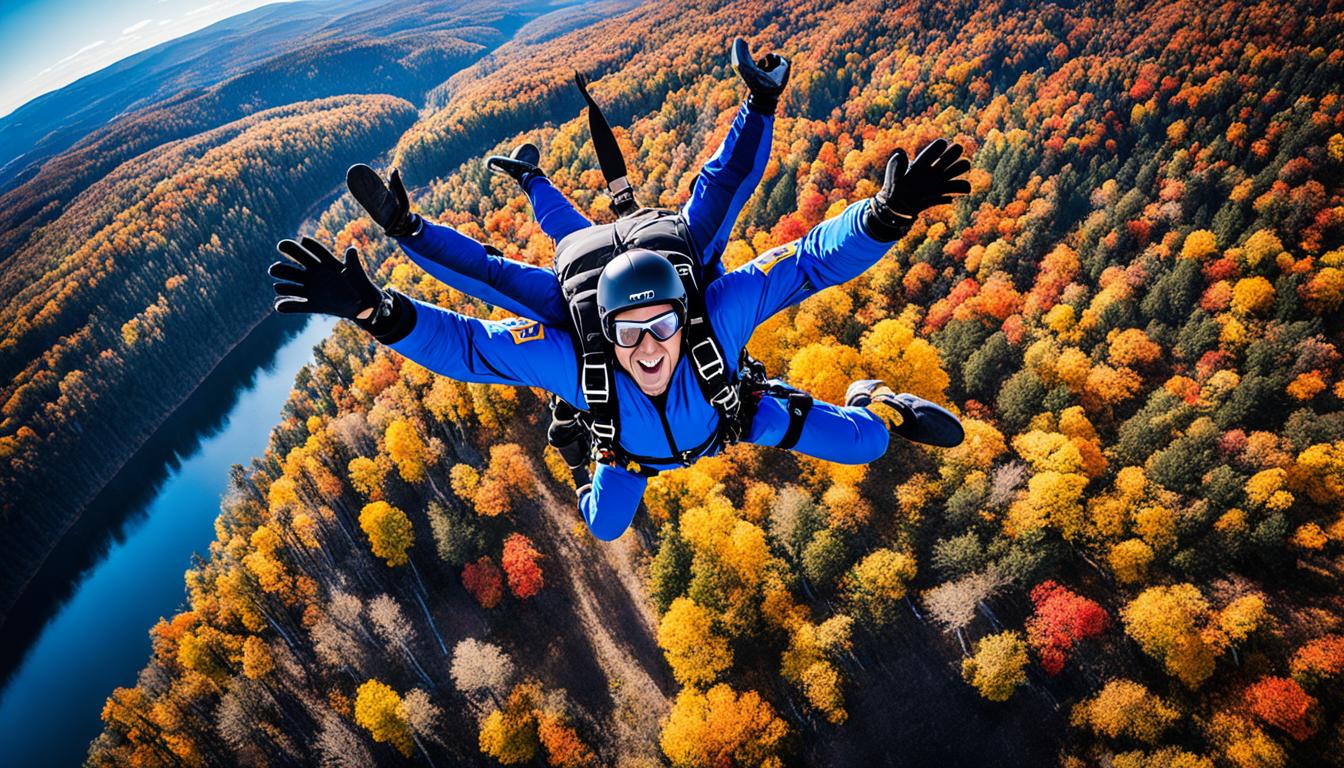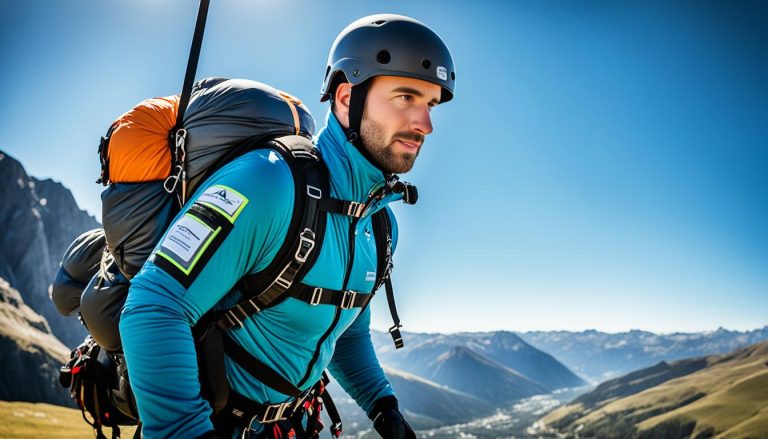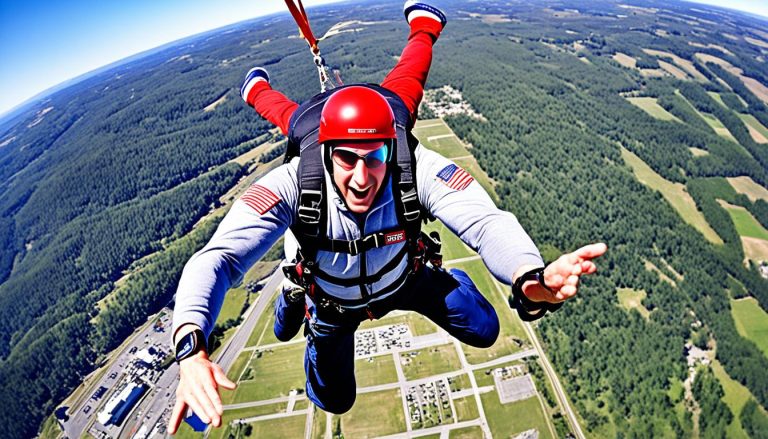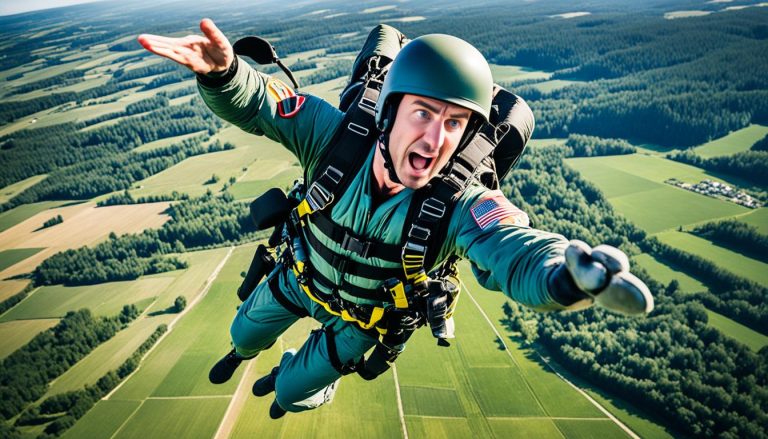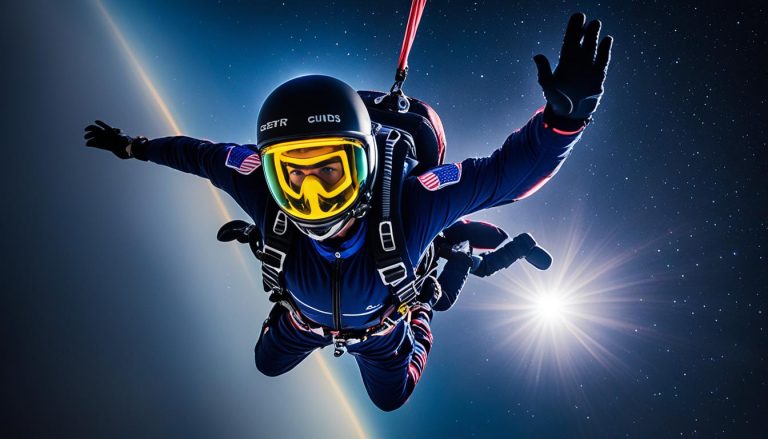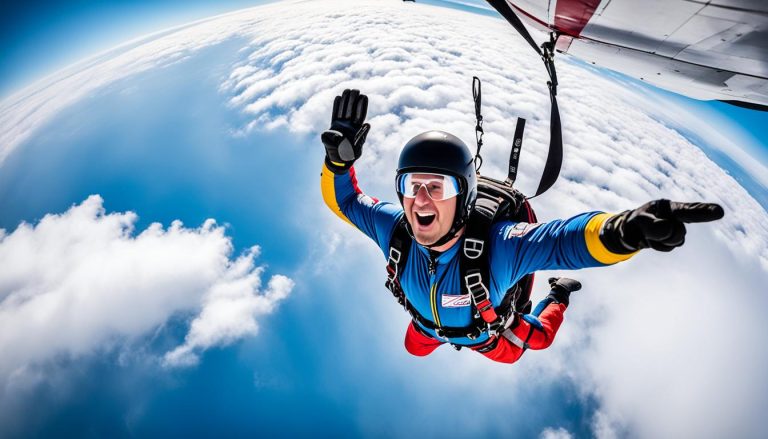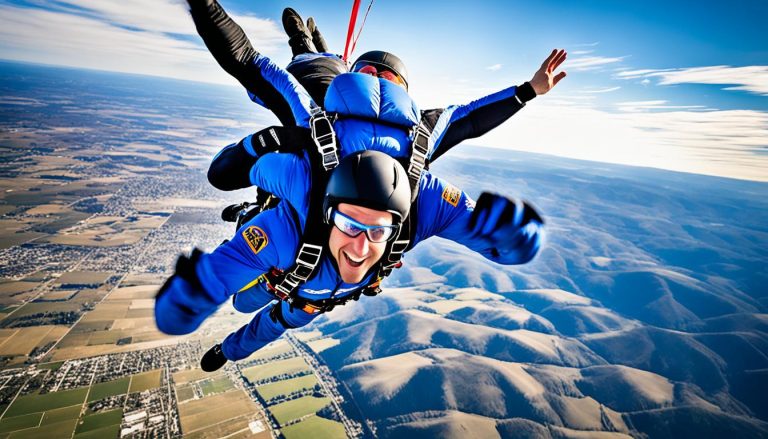Skydiving Through the Seasons: Seasonal Tips
Skydiving is an exhilarating outdoor sport that allows individuals to experience the thrill of freefalling through the sky. However, the weather conditions play a crucial role in determining the safety and success of skydiving jumps throughout the year. Whether it’s spring, summer, fall, or winter, skydivers need to adapt their techniques to the varying weather conditions to ensure a memorable and enjoyable experience.
Adapting techniques for weather conditions is essential for skydivers to maximize their jumps and maintain safety. In spring, as the skydiving season typically begins, the temperatures start to rise, and the weather becomes more favorable for jumps. Clear blue skies, light and variable winds, temperatures in the mid to high 50s, and minimal clouds are ideal for skydiving in April.
It’s important for skydivers to dress appropriately for the weather. With changing temperatures, dressing in layers is key to staying comfortable during jumps. Avoid wearing open-toed shoes, hats, jewelry, or bulky and restricting clothing. Dressing right ensures flexibility and minimizes discomfort during freefall and parachute flight.
Tandem students should focus on meeting weight requirements and obtaining proper medical clearance before skydiving. For licensed jumpers and solo students, engaging in light exercise and stretching helps prepare the body for the demands of skydiving. Maintaining a positive mindset and proper preparation are crucial for a safe and successful season.
As the skydiving season progresses, it’s important to stay updated with the specific start and end dates for skydiving. The skydiving season varies depending on the location and climate of the dropzone. Checking with the local dropzone helps ensure an accurate schedule and allows skydivers to plan their jumps accordingly.
By understanding the best time of day to skydive, skydivers can optimize their experience. Typically, the morning offers calmer winds, making it the preferred time for skydiving. However, the specific time may vary depending on the season. Monitoring weather forecasts for wind speeds and temperature helps in planning jumps at the most favorable times.
As skydiving gear is crucial for safety and performance, proper preparation is essential for a successful season. Skydivers should ensure that their gear is in good condition and properly packed. Addressing any necessary repairs, cleaning the equipment, and checking the reserve parachute are important steps to take before the season begins. Staying informed about gear regulations and industry trends allows skydivers to stay up to date and make informed decisions regarding their equipment.
Safety is paramount in skydiving, especially when dealing with different weather conditions. Skydivers should be aware of the risks associated with varying weather conditions and take appropriate precautions. Dressing appropriately for colder seasons, monitoring wind speeds, and avoiding adverse weather conditions are crucial for maintaining safety while skydiving.
Overall, skydiving through the seasons offers unique experiences and challenges. By adapting techniques for weather conditions, staying informed, and preparing properly, skydivers can have an incredible and fulfilling skydiving journey.
Skydiving Season: When Does It Start and End?
The skydiving season varies depending on the dropzone’s location and climate. In general, the season starts in spring and runs through the fall months. For example, at a dropzone located in an island region, the skydiving season starts in April and ends in mid-October. The specific dates may differ based on the climate and weather conditions of each location. It’s important for skydivers to check with their local dropzone to determine the exact start and end dates of the skydiving season.
During the skydiving season, enthusiasts can enjoy the thrill of soaring through the sky and experiencing the adrenaline rush of freefall. Whether it’s a solo jump from a plane or a tandem jump with a certified instructor, skydiving offers an unforgettable experience for adventure seekers.
When does the skydiving season start? The season typically begins in spring, when the weather starts to warm up and become more favorable for jumps. As the snow melts and the sun shines brighter, skydivers eagerly prepare to hit the skies and enjoy the breathtaking views.
But when does the skydiving season end? The season typically wraps up in the fall, before the temperatures drop too low and unfavorable weather conditions set in. It’s important for skydivers to take advantage of the skydiving season while it lasts and make the most of their jumps.
Here is a table showcasing the approximate start and end dates of skydiving seasons in different regions:
| Location | Start Date | End Date |
|---|---|---|
| Island Region | April | Mid-October |
| Mainland Region | May | September |
| Mountain Region | June | August |
Keep in mind that the actual start and end dates of the skydiving season may vary based on local weather patterns, safety regulations, and other factors specific to each dropzone. It’s crucial for skydivers to stay updated on any changes or announcements from their chosen dropzone regarding the skydiving season.
Best Time of Day to Skydive
The best time of day to skydive can vary depending on the weather conditions and the time of year. Generally, the morning tends to be the calmest time for skydiving as the winds are usually lighter.
In the spring, it is ideal to schedule jumps around 10:00 am or 11:00 am. While the mornings can be very cold, the winds start to pick up later in the day. This timeframe provides a balance between favorable wind conditions and more comfortable temperatures.
During the summer months, it’s advisable to book jumps as early in the day as possible. This is to avoid the high heat and potential thunderstorms that commonly occur in the afternoon. By jumping in the morning, skydivers can enjoy cooler temperatures and reduce the risk of adverse weather conditions.
When planning a skydive, it’s crucial to check the forecast for wind speed and temperature. This will help determine the optimal time for a safe and enjoyable jump. Skydiving during different times of day allows for diverse experiences and challenges, adding to the thrill of the sport.
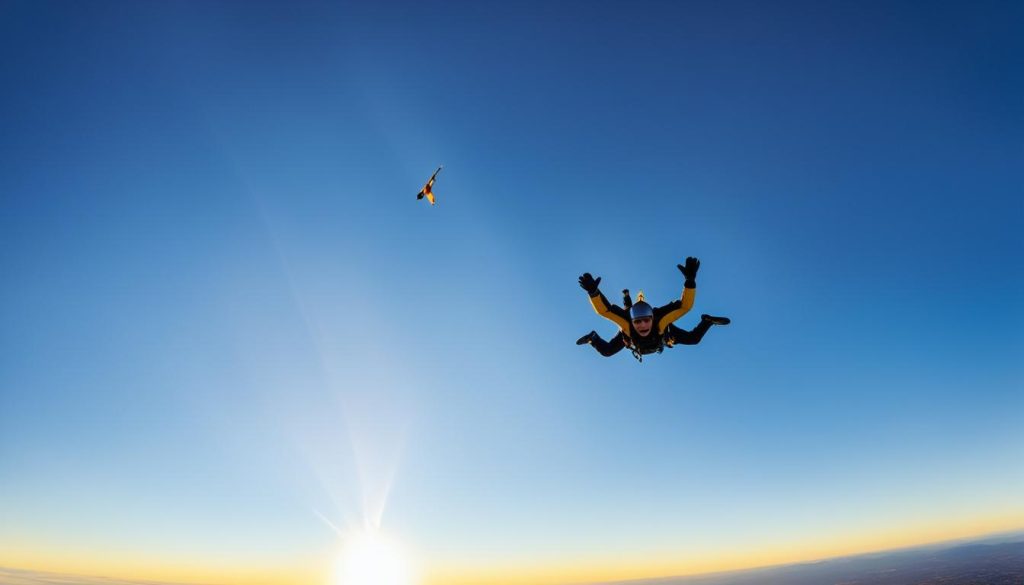
It’s important to note that weather conditions can vary from one location to another, so it’s always a good idea to consult with experienced skydivers or instructors at the dropzone for specific recommendations.
Skydiving Gear for Different Seasons
Skydiving gear preparation is crucial for a safe and enjoyable skydiving season. To ensure a smooth and successful experience, skydivers should take the time to properly prepare their gear before the start of the season. This involves conducting thorough checks, cleaning the equipment, addressing any necessary repairs, and staying informed about any changes in documentation or regulations that may have occurred during the off-season.
Checking the reserve parachute is of utmost importance. Skydivers should carefully inspect the parachute for any signs of wear or damage. They should also ensure that the parachute is properly packed and ready for deployment. Having a well-maintained reserve parachute is essential for the overall safety of the skydiver.
Additionally, it’s recommended to review and update the gear’s maintenance schedule. Cleaning the equipment, including the jumpsuit and helmet, is essential to remove any dirt or debris that may have accumulated during previous jumps. Skydivers should also inspect their harness and other gear components to ensure they are in good working condition.
If new gear is needed, it’s advisable to place orders in advance to allow for customization lead times. Skydivers have different preferences when it comes to their equipment, and ordering early ensures that the gear is ready before the start of the season. It’s important to consider factors such as the type of parachute, helmet, and jumpsuit that best suit individual needs and preferences.
Staying informed about industry trends is also essential. Skydiving gear technology and advancements are constantly evolving, and it’s important for skydivers to stay updated on the latest developments. Attending industry events, workshops, or seminars can provide valuable insights into new gear options and techniques. Additionally, practicing skills, whether in a wind tunnel or outdoors, helps skydivers maintain their proficiency and adaptability throughout different seasons.
Setting personal goals is another crucial aspect of preparing for the skydiving season. Skydivers can identify specific goals they wish to achieve, such as mastering a new maneuver or increasing their jump frequency. By setting realistic and attainable goals, skydivers can stay motivated and focused throughout the season.
Maintaining a good level of fitness is also important. Skydiving requires physical stamina and strength, and being in good physical condition enhances overall performance and safety. Engaging in regular exercise, cardiovascular workouts, and strength training can improve endurance and reduce the risk of injuries.
Overall, skydiving gear preparation involves thorough checks, proper cleaning and maintenance, staying informed about industry trends, setting goals, and maintaining physical fitness. By dedicating time and effort to gear preparation, skydivers can ensure a safe and enjoyable skydiving season.
Skydiving Safety in Varying Weather Conditions
Skydiving safety is of utmost importance, especially when faced with different weather conditions. It is crucial for skydivers to be well-informed about the potential risks and take appropriate precautions to ensure a safe and enjoyable skydiving experience.
In colder seasons, such as winter, the temperatures at skydiving altitudes can be significantly colder than on the ground. It is essential for skydivers to dress in layers to stay warm, while also avoiding open-toed shoes, hats, and bulky clothing that can interfere with the proper functioning of the equipment and pose safety risks.
Skydiving through clouds or in rainy conditions is strictly prohibited due to limited visibility and the increased dangers it presents. It is vital for skydivers to monitor wind speed and avoid high heat or thunderstorms during the summer months. Paying close attention to changing weather conditions is crucial for maintaining safety while skydiving.
Following the best practices recommended by instructors and the dropzone is imperative for ensuring a safe skydiving experience. Skydivers should always be prepared by staying up to date with the latest safety protocols and guidelines.
“While we love the thrill of skydiving, safety should always be the top priority. By understanding and respecting the impact of weather conditions on our jumps, we can ensure a safe and fulfilling skydiving experience.” – Experienced Skydiver
Best Practices for Skydiving in Different Seasons:
- Stay informed about weather conditions and forecasts before scheduling a jump.
- Dress appropriately for the season, layering up in colder weather and wearing lightweight, breathable clothing in warmer conditions.
- Avoid jumps in rainy or stormy weather to maintain visibility and minimize risks.
- Monitor wind speed and avoid jumping in windy conditions that could impact control and stability.
- Follow the instructions of instructors and adhere to the safety guidelines provided by the dropzone.
| Season | Weather Conditions | Safety Considerations |
|---|---|---|
| Spring | Clear skies, light and variable winds, moderate temperatures | Dress in layers, avoid bulky clothing, and pay attention to wind speed. |
| Summer | High heat, afternoon thunderstorms | Schedule jumps in the morning to avoid high heat and check for thunderstorm activity. |
| Fall | Changing weather patterns, cooler temperatures | Stay informed about weather changes and dress accordingly. |
| Winter | Cold temperatures, minimal cloud coverage | Dress warmly in layers, avoid open-toed shoes, hats, and bulky clothing. |
Remember, skydiving safety should be a priority regardless of the season. By mastering skydiving weather conditions and following the best practices, skydivers can enjoy their thrilling adventures while mitigating potential risks.
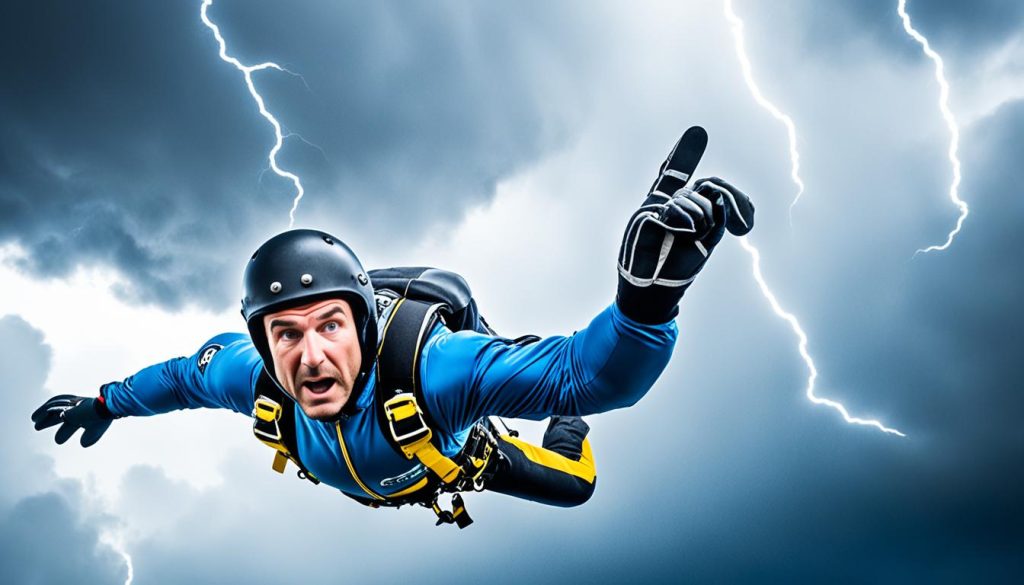
Skydiving in Different Climates
Skydiving enthusiasts have the opportunity to experience the thrill of freefall in various climates and weather conditions across the globe. While some dropzones offer year-round jumps, others operate on specific seasonal schedules based on their location. Understanding the effects of climate and weather patterns can greatly enhance the skydiving experience and ensure safety and enjoyment.
For those seeking warmer climates, popular skydiving destinations like Florida and Arizona offer thriving skydiving communities. These regions experience high activity during the winter months when the weather is more favorable for jumps. Planning a skydive during the winter season in these locations allows for clearer skies, moderate temperatures, and lower wind speeds, providing ideal conditions for an unforgettable adventure.
Regardless of the climate, it is essential for skydivers to carefully consider weather conditions before planning their jumps. Clear skies, minimal cloud cover, and favorable wind conditions are key factors in creating a safe and enjoyable skydiving experience. By monitoring weather forecasts and understanding the specific climate of their chosen locations, skydivers can adapt their techniques accordingly and optimize their jumps.
Here’s a summarized list of factors to consider when skydiving in different climates:
- Research the climate and weather patterns of the intended skydiving location
- Plan jumps during seasons with more favorable weather conditions and lower chances of adverse weather events
- Check weather forecasts regularly for up-to-date information on wind speed, cloud cover, and temperature
- Adapt clothing and gear choices based on the expected climate, such as adding layers for cooler temperatures or opting for lightweight apparel for hot and humid conditions
- Consult with local skydiving experts for insights on specific weather considerations and safety precautions in the region
Understanding the unique climate and adapting strategies accordingly is crucial in ensuring a safe and memorable skydiving experience, regardless of the location. By staying informed and prepared, skydivers can enjoy the breathtaking views and adrenaline-pumping moments that the sport has to offer.
Importance of Mental Preparation for Skydiving
Skydiving is an extreme sport that requires more than just physical readiness. Mental preparation plays a vital role in enhancing the overall skydiving experience, whether you’re a first-time jumper or a seasoned veteran. Taking the time to prepare mentally can help alleviate anxieties, boost confidence, and ensure a more fulfilling skydiving journey.
For first-time skydivers, deep breathing exercises can help calm nerves and promote relaxation before the jump. By focusing on the breath, individuals can ease anxiety and enter a more composed state of mind. Additionally, booking jumps in advance allows for mental preparation and anticipation, giving new jumpers a sense of control and familiarity.
Deep breathing exercises are a simple yet effective technique to calm nerves and enhance mental preparedness. By focusing on the breath, you can enter a more composed state of mind before your jump.
Familiarizing yourself with frequently asked questions and common skydiving concerns can also help alleviate anxiety. Knowing what to expect, understanding safety protocols, and learning about the experience from others can provide reassurance and confidence for first-time jumpers.
For experienced skydivers, mental preparation involves setting goals for the upcoming season. Whether it’s working towards achieving a new skydiving certification, mastering a new technique, or conquering a personal fear, setting specific objectives helps maintain motivation and focus.
Rebecca, an experienced skydiver, sets yearly goals to challenge herself and foster continuous growth in her skydiving practice.
“Each year, I set new goals to keep pushing myself and exploring new possibilities in the skydiving world. It keeps the excitement alive, gives me something to work towards, and helps maintain my passion for the sport.”
Clearing out gear and ensuring all equipment is properly maintained and up to date is another crucial aspect of mental preparedness for solo skydivers. Knowing that their gear is in top condition and ready for use can provide peace of mind, allowing jumpers to focus solely on the experience.
Building a positive mindset is essential for all skydivers. Maintaining skills through regular practice, whether in a wind tunnel or during off-season jumps, helps keep technique sharp and boosts confidence. Surrounding oneself with a supportive skydiving community and engaging in conversations about the sport further cultivates a positive mental attitude.
Maintaining a Positive Mindset:
- Practice self-affirmations to boost confidence
- Surround yourself with a supportive skydiving community
- Engage in conversations about the sport
David, an experienced instructor, emphasizes the importance of mental preparation:
“Skydiving is not just about physical skills; it’s about mental readiness. When you’re mentally prepared, you can stay focused, make split-second decisions, and enjoy the freedom of the sky to the fullest.”
Overall, mental preparation is just as crucial as physical readiness for a successful and enjoyable skydiving season. By incorporating deep breathing exercises, setting goals, maintaining gear, building a positive mindset, and practicing regularly, skydivers can enhance their mental preparedness and approach each jump with confidence and excitement. Being mentally prepared contributes to a more confident and fulfilling skydiving journey, allowing skydivers to fully embrace the exhilarating experience of freefalling through the sky.
Conclusion
Skydiving through the seasons offers a thrilling and dynamic experience for adventurers of all levels. From the refreshing jumps of spring to the scorching heat of summer and the golden hues of autumn, each season presents its own unique challenges and rewards. By understanding the climate and weather patterns of their chosen skydiving location, skydivers can adapt their techniques and make the most of their jumps.
Proper preparation is key for a successful skydiving season. This includes regular gear maintenance to ensure safety and functionality, as well as physical and mental readiness. Skydivers should stay informed about safety practices and industry updates to stay ahead of the game. Building a positive mindset and setting goals can contribute to a more confident and fulfilling skydiving journey.
Regardless of the season, skydiving invites thrill-seekers to embrace the exhilaration and unlock unforgettable memories. With the right mindset and preparation, skydivers can experience the awe-inspiring beauty of the sky in every season. So take the leap, adapt to the elements, and make every skydive a remarkable adventure, no matter the time of year.

